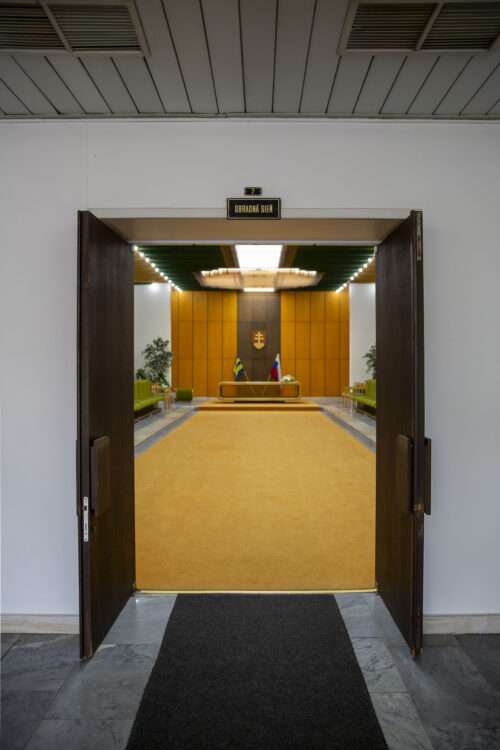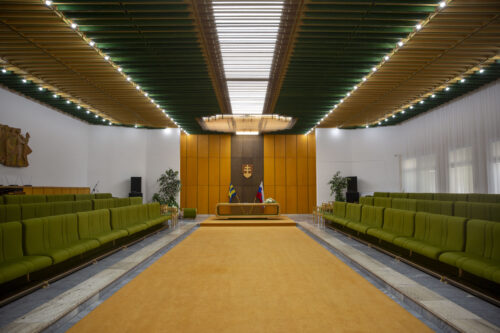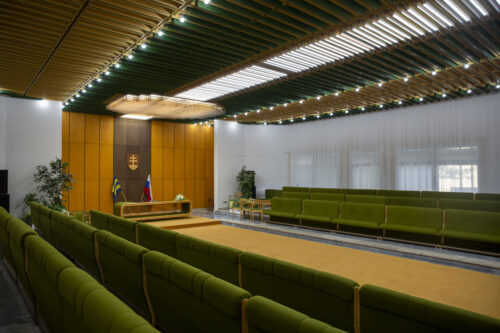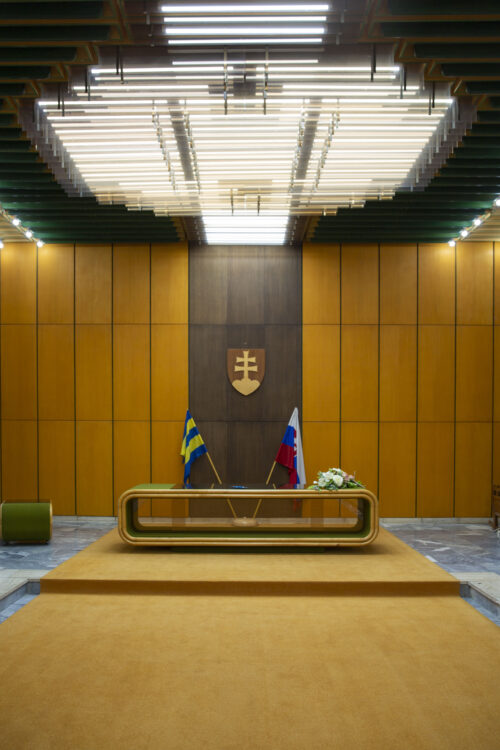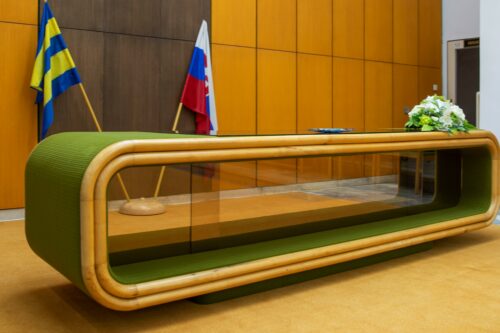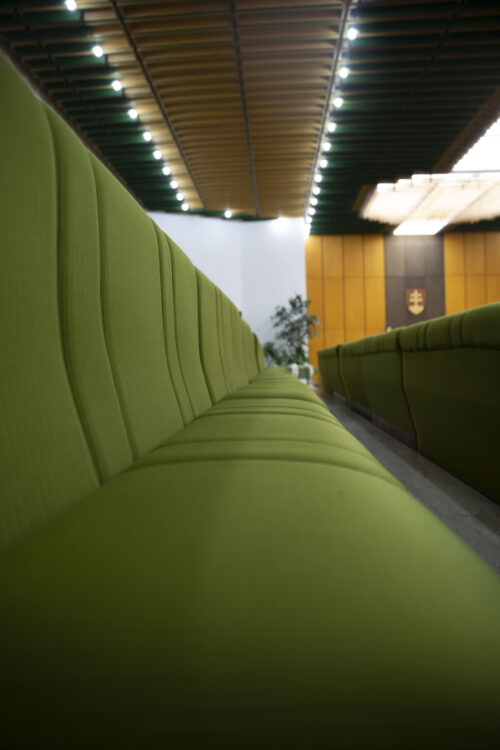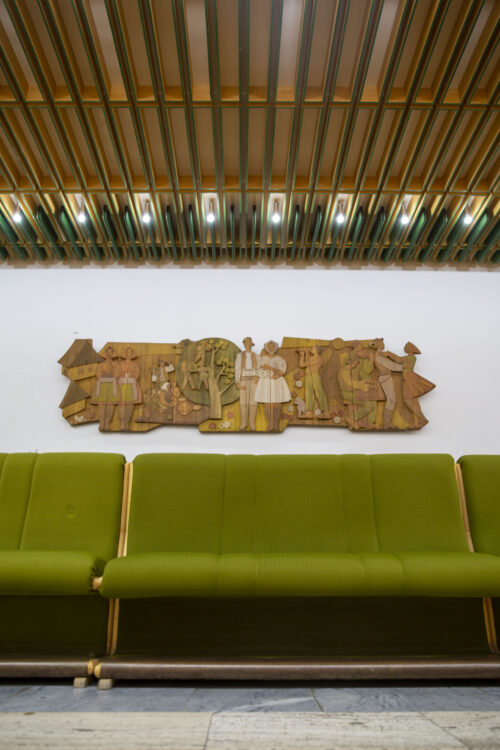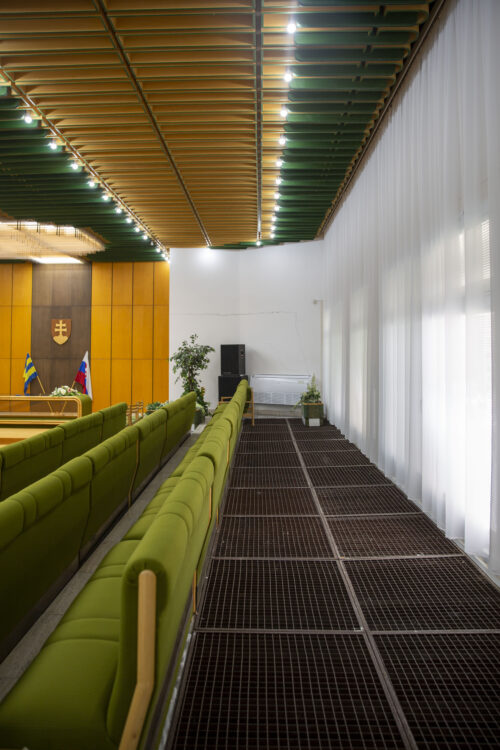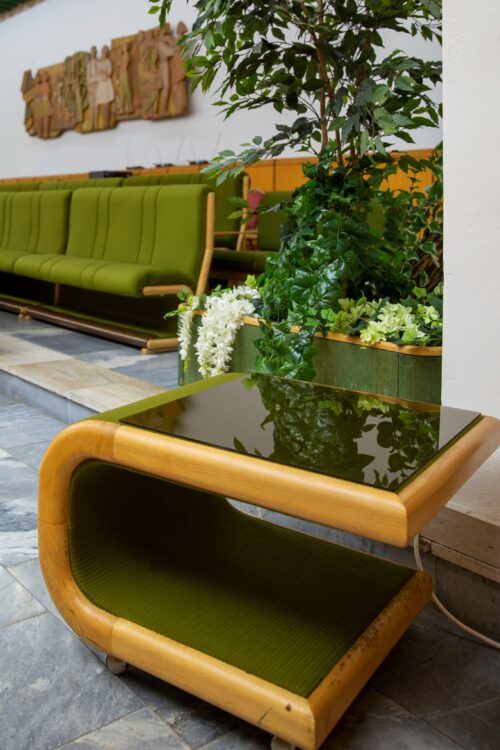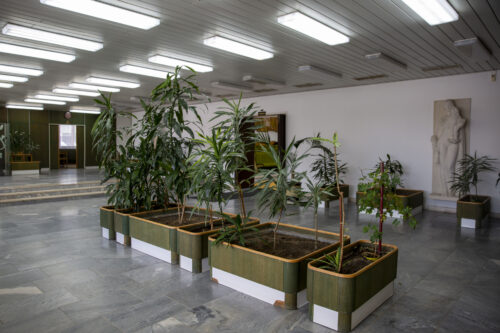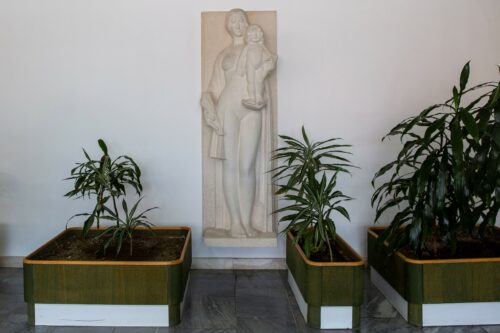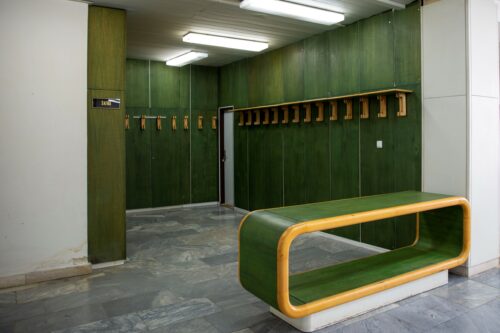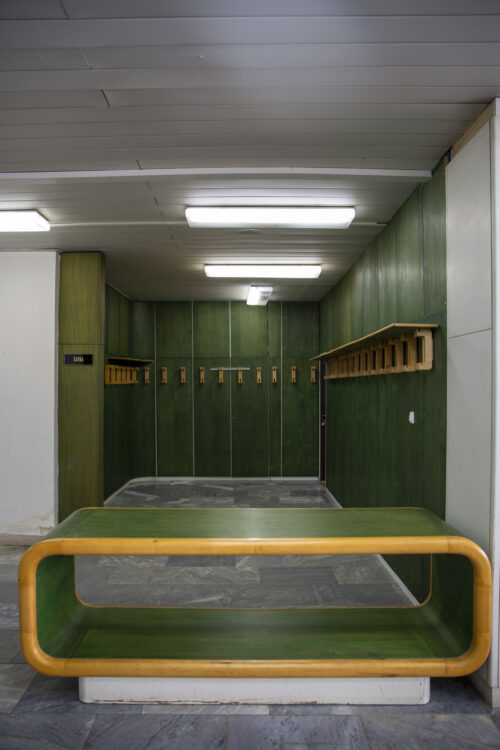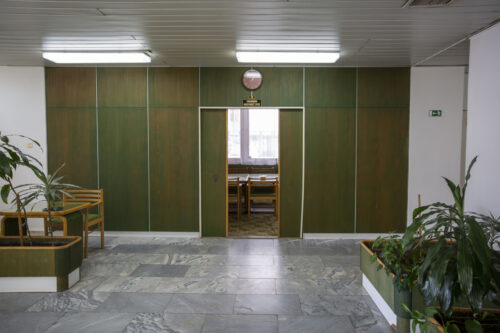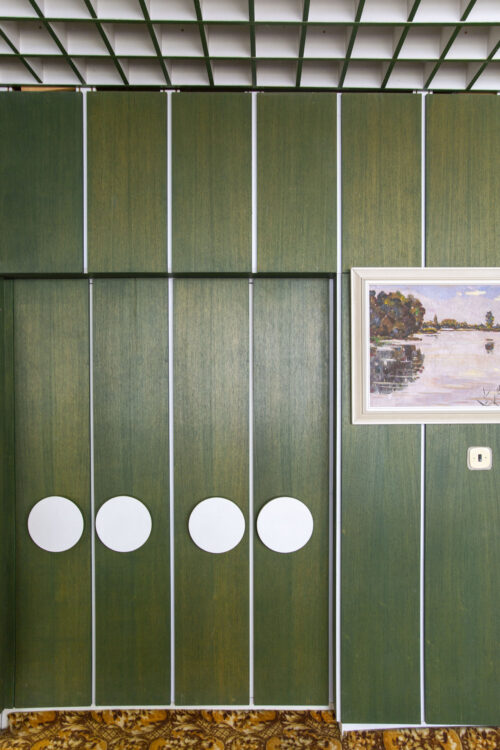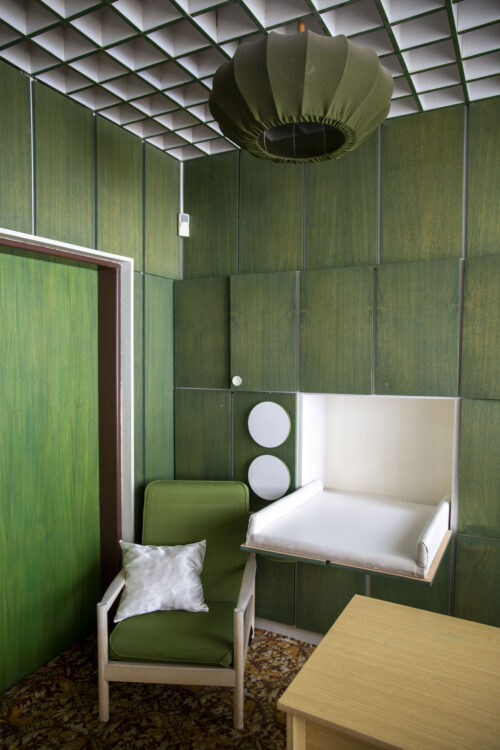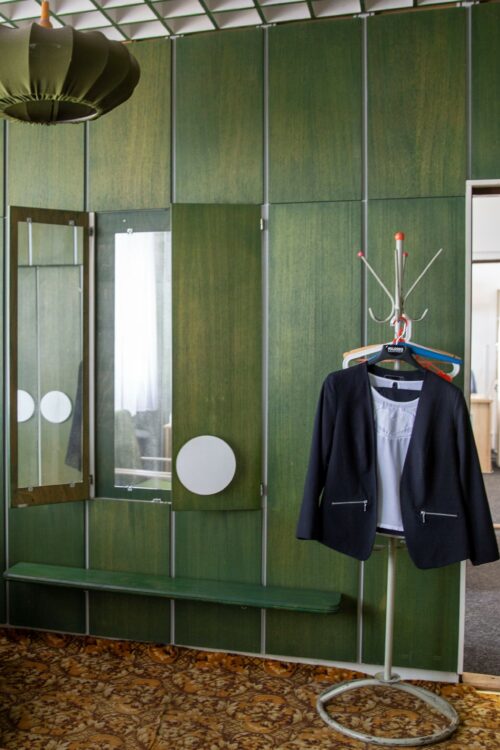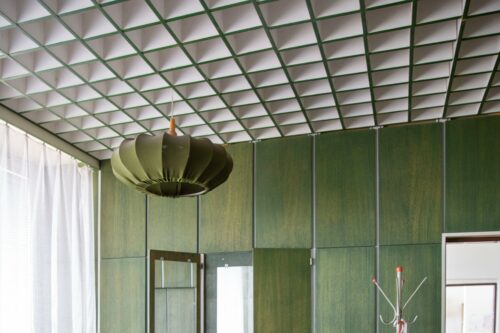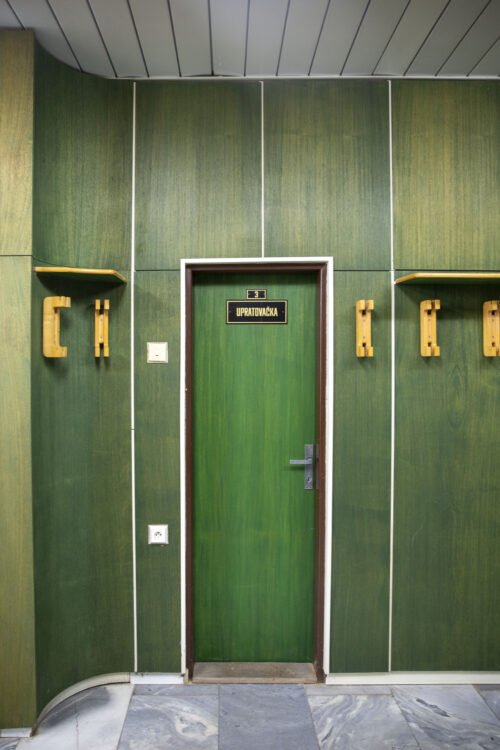Civil registry office
Category: Administrative institutions
Architect: Jozef Maňuch
In cooperation with: Ján Mokriš
Works of art: Michal Czupil and others
Location: Námestie slobody 4, Vranov nad Topľou
Design: 1978
Built in years: 1979–1984
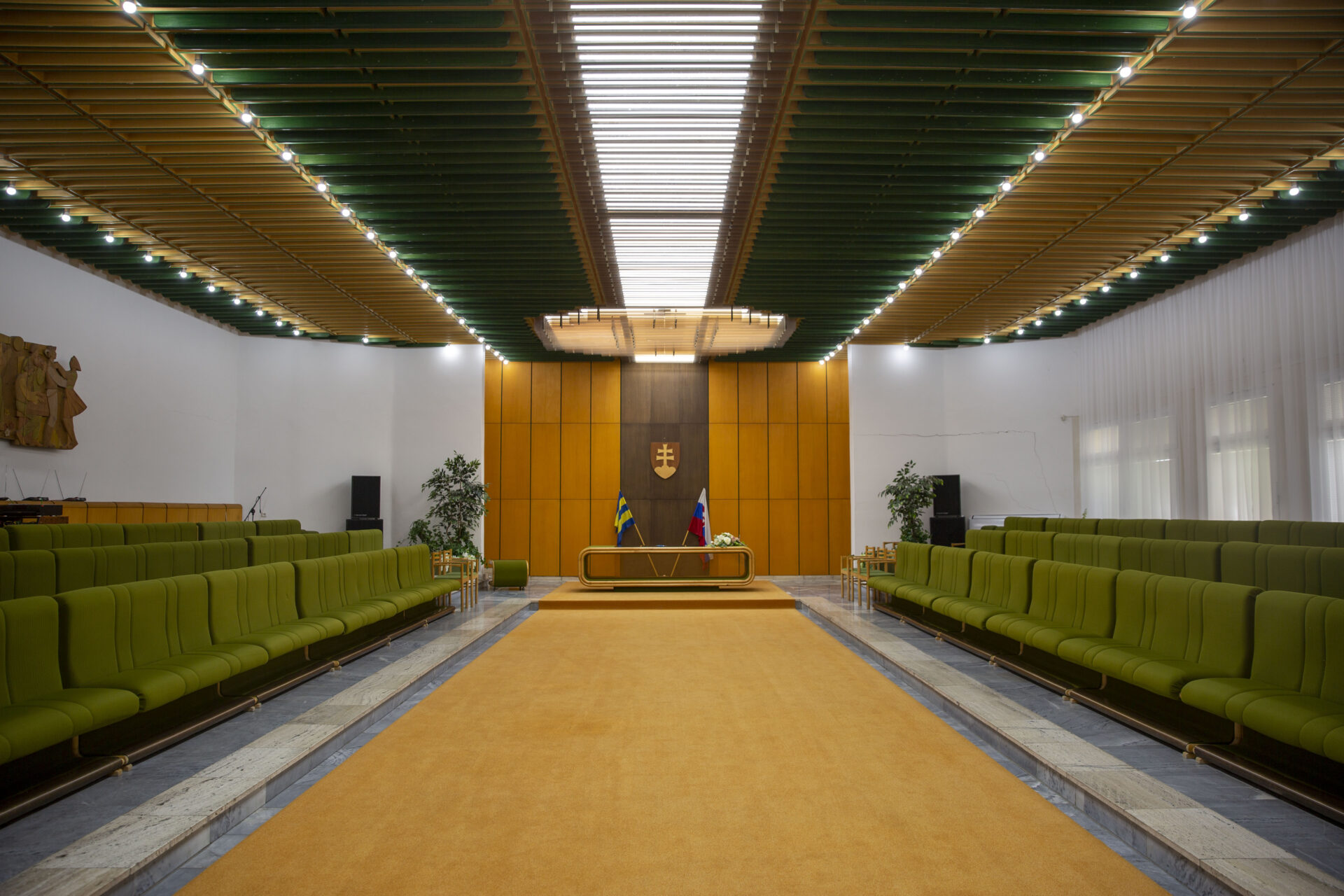
At first glance, the building looks inconspicuous; however, the interior offers unexpected design and artistic dimensions. The construction of the building was initiated by the desire to create a dignified space for formal cultural and social events of a public and private nature. The interior spaces designed for these purposes have been preserved to the present day. Thus, a ceremonial hall, a meeting hall, as well as a spacious lobby, occasionally used also as a gallery, are still available for both public and private events.
The interior of the ceremonial hall offers 94 seats and 20 places for standing visitors. The exceptional spatial composition with a longitudinal arrangement of seats in front of the ceremony table breaks away from the usual designs of ceremonial halls. The three-nave interior consists of a central circulation area and two side wings used for seating. The longitudinal axis of the room is artistically enhanced by a carpet and a line of ceiling lights which are designed in compositional connection with the wooden slats. The rhythmically arranged lights form an artistically impressive three-dimensional “sculpture” created by the multiplication of light and drop ceiling elements. The front wall of the room is lined with wooden panels in the centre of which there is the national emblem of the Slovak Republic. In the foreground is an elegant ceremonial table of timeless design with rounded details on the edges. The visually dominant, longitudinally arranged all-upholstered seats in green colour are placed one step higher in order to ensure better visual experience of the audience. [2]
Before the ceremonial hall there is an entrance hall providing space for visitors to meet, socialise, and relax. Its integral part is the cloakroom with original, well-preserved cloakroom furniture and upholstered seating furniture. The interior of the entrance hall and the adjacent spaces is visually unified by the green-stained wooden panelling and interior elements in natural colour of wood. The ceiling is covered with aluminium slats and a wooden ceiling grid combined with flat lights. At present, the flooring is a combination of well-preserved natural stone of grey colour and patterned fitted carpets which have probably been replaced several times. “Interesting features of the interior are several works of art – wall reliefs depicting the celebration of life and special moments in a person’s life. The waiting room or gallery in front of the hall is decorated by many plants which evoke the atmosphere of the 1980s. These plants grow in original large wooden planters of green colour, which was also used for the panelling in the waiting area.” [2]
The quality of the original interiors is proven by the fact that after many years the building is still used by several hundred people every year. Besides different kinds of events, the building also attracts visitors by its atmosphere, which is created by interior design with preserved specific features representing the creative tendencies of the time. The interiors of the building are a convincing proof that in even architecturally inconspicuous buildings one can often find distinctive, almost forgotten, cultural and social values of the past. The words of Petra Grošíková, the author of the enclosed photographs, also testify to this fact: “The reason I chose the ceremonial hall in Vranov nad Topľou for my thesis is that the building’s interior is underestimated since its exterior is not considered exceptional. I am convinced, however, that the overall furnishing of the building will impress many admirers of architecture and design.” [2]
- Beňušková, Zuzana: Občianske obrady na Slovensku. [Civil Ceremonies in Slovakia]. VEDA – the publishing house of the Slovak Academy of Sciences, 2017, 136 pages.
- Grošíková, Petra: Mestské centrum kultúry vo Vranove nad Topľou: [Municipal Culture Centre in Vranov nad Topľou.] Seminar paper for the Public Interior course, Faculty of Architecture and Design STU Bratislava, Summer Term 2021–22
Petra Grošíková
